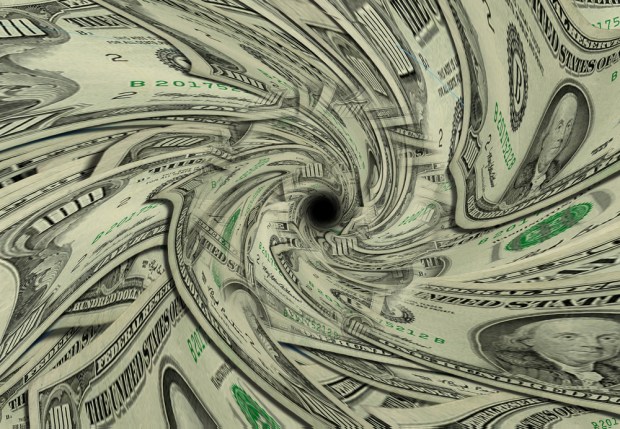The Impact Of A Weaker Dollar On Payments

Talking down the dollar seems a new strategy for a new administration. Here’s what a weaker dollar may mean on stages large and small, from the macro to the micro level.
Physics teaches us that for every action there is a reaction. The same holds true for the dollar.
Incoming U.S. President Donald Trump just a few days ago was talking down the dollar, not long ago at a 14-year high, stating in an interview with The Wall Street Journal that “our dollar is too strong” and that the U.S. is suffering by extension against China. The comment had some initial impact on stock exchanges, helping, for example, to send shares in beleaguered retail companies up. On the other hand, Trump’s take on currencies had an immediate and outsized impact on the dollar, as it dropped 1.3 percent in a basket of global peers.
A roadmap of sorts may be taking shape. In terms of policy (monetary, that is), most glaring is the seemingly abrupt change in presidential attitude toward the greenback.
It has been widely noted that for decades, the presidential bully pulpit has been one from which its occupants have championed a stronger currency, chiefly to bolster buying power and also keep a lid on interest rates. That may be about to change, and the impact would be felt, possibly, on a grand scale.
Trump said in the same interview that the U.S. “might need to get the dollar down” if tax policies start to drive it up. Another impetus to bringing the dollar down may come as the Federal Reserve is on track to boost rates twice and possibly three times in 2017, with an eye on inflation. Rising rates generally mean stronger currencies.
Well, isn’t the strength of a dollar a tell on the strength of the U.S. economy, and isn’t strength in the former a guarantee of strength in the latter? Before delving into that, we’re setting in place a mantra to pop up periodically through the rest of this exploration: It depends.
It depends on which side of the coin you look. At the highest level, which would be the flow of imports and exports, a strong dollar makes the goods that the U.S. imports, from lumber to steel to luxury handbags and Italian shoes, more affordable to those who are spending stateside. Capital flows also gravitate toward our shores, as investors seek out higher returns from abroad, which is good for everything from stock markets to real estate markets.
And winding down the path to the consumer, the U.S., as a nation, has lower costs of borrowing, which means that interest payments are lower, which means that interest rates are lower, which at the more micro level means that consumer debt costs less, translating to more pocket money.
All of this sounds good. So why then talk down the dollar? If what Trump wants to do is boost exports, which is likely given the twin promise of job creation and bringing back business to the domestic front, then the dollar must soften, it seems, in his eyes. Buyers located abroad will want to buy U.S. goods (and also services) when they become relatively cheaper to their own home currencies.
The machinations of what a Trump administration might undertake to weaken the dollar have not yet been spelled out. But the most obvious conduit would be one macro in intent, in terms of protectionist trade policy. If that route is followed, then imported goods (and luxury goods, especially) become even more expensive. Should we expect then that affluent consumers (such as Amex cardholders) might think twice before swiping or inserting their chip cards in terminals? That could be a rough environment for firms such as Visa and Mastercard in the U.S., at least.
The weak dollar serves well on a GDP basis by boosting exports. But by extension, that means capping imports, which are suddenly more expensive (with or without protectionism). And with luxury goods firms such as Tiffany & Co. seeing a high percentage of sales outside the U.S., that could be a boon — at the corporate level and through an international lens. The exports that multiply beyond U.S. shores ultimately wind up in pockets and homes and on shelves in other nations. Cross-border payments are likely to pick up, with directional flows outbound from the U.S.
But at the individual level, for those of us used to purses and wines and perfumes, and even gadgetry, things become a bit more dear. That would temper the “wealth effect” that so often comes with stock markets hitting new highs (and by the way, when the money is tied up in stocks, there’s less to go around for an impulse buy). Commodities are priced in dollars, too, and gas, that most urgent of commodity buys, may take a bite out of discretionary spend on other items. Even vacations become more expensive, with shopping less about enthusiastic buying sprees than bargain hunting.
It’s too early to tell what might happen to the dollar, days as we are before policy is guided, for real, by new hands. But it may be the case that a dollar simply ain’t going to be what it used to be.
